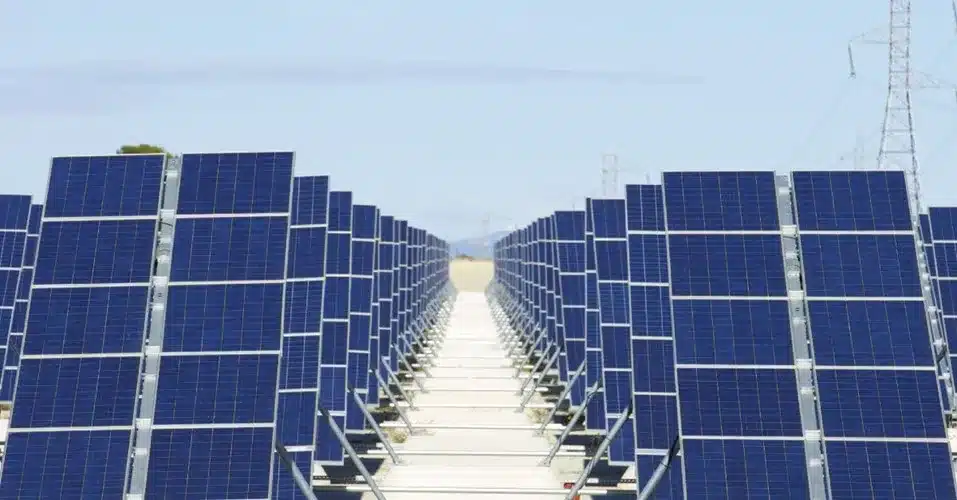Union Budget 2022: Focus on Climate Change

The Union Budget 2022 has focus on growth and all-inclusive welfare. It increases focus on technology-enabled development, energy transitions, and climate action. It also encourages private and public investment. There are four priorities — PM Gati Shakti (bridges between roads, railways, airports, ports, mass transit, waterways, and logistics infrastructure); inclusive development; productivity, sunrise opportunities, energy transition, and financing investment.
Union Budget 2022 talks about climate change and sustainability. Climate change agenda is seen as an opportunity and a low-carbon strategy is promised. In the speech the word ‘energy transition’ is used explicitly, and we’re encouraged to ‘re-imagine’ our cities as sustainable living centres. Additionally, green energy and clean mobility are featured as ‘sunrise opportunities’. A few observations on the union budget from a sustainability standpoint:
Push and simultaneously positive hope for a sustainable future
Sitharaman is calling the green economy a “sunrise economy”, calling it a “circular economy transition”. She says it can boost productivity and create jobs in sectors like electronic waste management, used oil waste management, toxic and hazardous industrial waste, and end of life vehicles. According to her, the government is now looking at technology augmentation in these sectors, as well as convergence of sectors, including integration of the informal sector and extended user responsibility.
Push for solar energy development
Recalling climate change as a dire issue of India currently and simultaneously quoting Prime Minister Narendra Modi at COP26 in Glasgow saying that “what is needed is mindful and deliberate utlisation”, and that the government was committed to a strategy of low carbon development. The finance minister also announced the government wants 280 GW of solar energy installed by 2030; they’re allocating Rs 19,500 crore to make “high efficiency modules”.
Shift in Urban Public Transportation
In the finance minister’s speech, he said upcoming sectors such as e-mobility and geospatial were all part of the sunrise economy, and that the government would promote a shift in urban public transportation, promoting electric vehicles and “fossil-fuel-free” zones. In order to do this, charging stations will be installed across the country and scaled up, along with a battery swap policy.
Mandatory biomass pellets in thermal power plants
Further, 5-7 per cent biomass pellets will be mandated in thermal power plants. Biomass co-firing should be increased from 5% to higher levels to have a larger share of carbon neutral power generation from thermal power plants. The biomass co-firing process involves using biomass as a partial fuel substitute for high efficiency coal boilers
Single-window platform of environmental clearances for projects
She also announced that the Environment Ministry’s Parivesh portal – a single-window platform of environmental clearances for projects – will be further streamlined for ease of doing business, and that the four different clearances for projects – environmental clearance, forest clearance, wildlife clearance and CAMPA funds – will now be carried out through a single form.
Energy savings in large commercial buildings and agroforestry
Energy efficiency and energy savings will also be prescribed for large commercial buildings, which will include energy audits and performance-linked incentives. The government will also launch four pilot projects for coal gasification.
The Centre will also push agroforestry in the country as well as the development of private forests and will incentivise agroforestry for farmers who want to take it up.
Finance and support for the initiatives
The finance minister further said that the government intends to support these green initiatives with numerous financing options: sovereign green bonds to mobilise finance for green public infrastructure projects; promotion of thematic funds for blended finance, in which the public share will be 20%; a fund with blended capital through NABARD for agricultural and rural start-ups, and innovative finance for appropriate metro systems at scale. These are just possibility indicated; however, the nitty gritty of these possibilities are yet to be straightened up.
Read Also: How Pandemic impact on Consumer behaviour
Observer Voice is the one stop site for National, International news, Sports, Editor’s Choice, Art/culture contents, Quotes and much more. We also cover historical contents. Historical contents includes World History, Indian History, and what happened today. The website also covers Entertainment across the India and World.
Follow Us on Twitter, Instagram, Facebook, & LinkedIn

